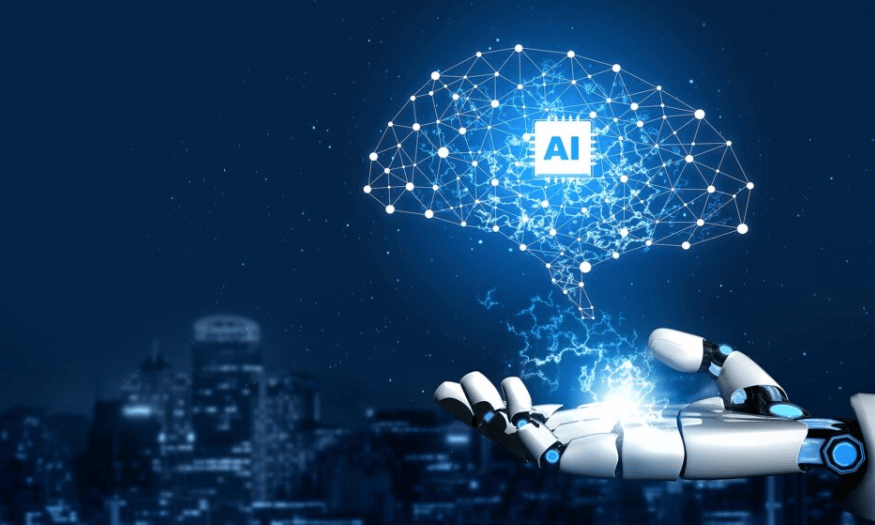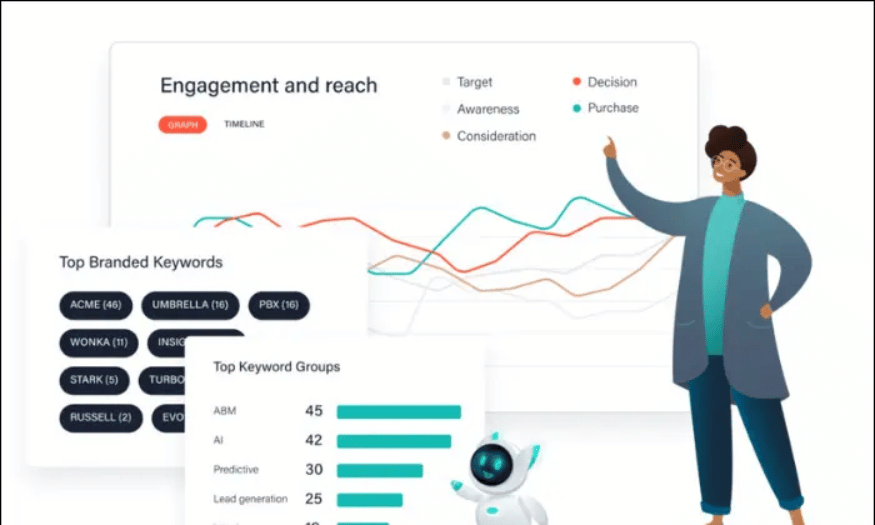Best Selling Products
Exploring AI Technology In Modern Design
Nội dung
- 1. What is AI technology in design?
- 2. How AI in Design Works
- 3. Why should businesses care about AI in design?
- 4. Application of AI design technology in various fields
- 4.1 AI technology in lesson design
- 4.2 AI technology in architectural design & construction
- 4.3 AI technology in image & graphic design
- 4.4 AI technology in product design & UX/UI
- 4.5 AI technology in fashion design
- 4.6 AI technology in interior design
- 4.7 AI technology in advertising design
- 5. Benefits & challenges of applying AI technology in design
- 5.1 Benefits of AI in Design
- 5.2 Challenges in applying AI in design
- 6. Conclusion
In the modern design world, artificial intelligence (AI) technology is becoming a key factor, opening up endless possibilities for creativity and innovation. From optimizing the design process to creating unique products, AI not only helps designers save time but also improves the quality and creativity of products. In this article, let's explore with Sadesign how AI is affecting the design field, outstanding tools and applications, as well as the challenges that this technology brings.

In the modern design world, artificial intelligence (AI) technology is becoming a key factor, opening up endless possibilities for creativity and innovation. From optimizing the design process to creating unique products, AI not only helps designers save time but also improves the quality and creativity of products. In this article, let's explore with Sadesign how AI is affecting the design field, outstanding tools and applications, as well as the challenges that this technology brings.
1. What is AI technology in design?
Artificial intelligence (AI) in design is revolutionizing the way we approach the creative process. AI is more than just a tool; it is becoming a powerful partner that helps designers optimize their workflow. The combination of AI and design allows for automation of many aspects, from data analysis to the generation of new creative ideas. Thanks to machine learning, AI can identify trends, analyze the market, and even predict user needs. This makes design much faster and more efficient than traditional methods.
In addition, AI not only saves time but also improves the quality of designs. Instead of spending hours creating new drawings or ideas, designers can use AI to narrow down their search and focus on more creative aspects. For example, AI can suggest designs based on user preferences or current trends, helping designers make faster and more accurate decisions.
2. How AI in Design Works
AI in design works in a variety of ways, bringing significant benefits to the creative process. First, one of the most prominent applications of AI is the ability to automatically generate content. Software such as DALL·E or Midjourney allows users to create images just by entering descriptive text. This not only saves time but also opens up new opportunities for creativity. Designers can quickly test many ideas without having to work out every little detail.
Second, AI also helps optimize designs based on data. In the field of architecture, for example, AI can analyze factors such as light, space, and materials to suggest the most optimal construction options. This not only ensures aesthetics but also improves the efficiency and sustainability of the project. In addition, AI also has the ability to personalize the user experience, allowing businesses to create design products that are suitable for different customer groups. Free AI design software such as Canva AI simplifies the process of creating graphic content, with just a few basic operations.
.png)
3. Why should businesses care about AI in design?
According to a report from Adobe, more than 60% of designers believe that AI will enhance work productivity rather than replace humans. This shows that AI is not a threat but an opportunity for designers to improve their workflow. Large enterprises such as Autodesk, Adobe, and Canva have invested heavily in AI technology, realizing that applying AI in design can help them optimize their processes and improve product quality.
With its ability to process quickly and accurately, AI is becoming an indispensable tool in businesses' product development and innovation strategies. Integrating AI into the design process not only helps reduce time and costs but also brings a clear competitive advantage. Businesses can quickly respond to market needs, optimize products and create the best user experience.
4. Application of AI design technology in various fields
Artificial Intelligence (AI) is becoming an integral part of many design fields, not only supporting creativity but also optimizing workflows. From instructional design, architecture, graphics to UX/UI, AI is helping businesses improve performance and reduce costs significantly. These applications not only bring financial benefits but also create more innovative and effective products.
4.1 AI technology in lesson design
In the education sector, AI supports the creation of digital lectures quickly and efficiently. This technology allows for the automatic design of slides, infographics, and lecture videos, saving teachers and content producers time and effort. One prominent example is Synthesia AI, a platform that allows the creation of teaching videos with AI presenters without the need to film real people. This not only simplifies the production process but also brings flexibility to teaching content.
The benefits of using AI in lesson design are clear: it significantly reduces the time and cost of content production. Education businesses can scale online training without having to invest heavily in human resources or equipment. Furthermore, with the ability to personalize content, AI can help create more engaging lessons that are tailored to the needs and interests of learners.
.png)
4.2 AI technology in architectural design & construction
AI is playing a major role in the architecture industry, helping architects create drawings faster and optimize space usage. Software such as Spacemaker AI (from Autodesk) can analyze the surrounding environment and propose energy-efficient and environmentally friendly urban designs. Using AI helps reduce design errors and improve the efficiency of design teams.
The benefits of AI in architectural design are also reflected in its ability to optimize construction costs. By analyzing data from previous projects, AI can suggest cost-effective design options that still ensure aesthetics and functionality. This not only saves budget but also shortens construction time, creating higher quality and more sustainable works.
4.3 AI technology in image & graphic design
AI is revolutionizing the field of visual and graphic design with software like DALL·E, Midjourney, and Runway ML. These tools allow users to create creative images from text descriptions alone. This convenience not only saves designers time but also opens up endless creative possibilities. Creating multiple versions of designs in seconds gives businesses more options to optimize their media content.
Canva AI is also a great example in this field, providing an online design tool that makes it easy for users to create advertising content or social media posts. The biggest benefit of using AI in graphic design is the ability to save time editing photos and create high-quality products without requiring specialized design skills. This makes it easier for small businesses or individuals to access and produce professional content.
.png)
4.4 AI technology in product design & UX/UI
AI helps analyze user behavior data to suggest optimal interfaces for products. Software like Uizard allows users to create wireframes and prototypes for digital products without much design skills. This makes the product development process faster and more efficient, thereby improving the user experience.
Applying AI to product design not only reduces development time but also creates products that are more suitable to the actual needs of consumers. Through data analysis, AI can identify user trends and preferences, thereby suggesting more sophisticated design solutions. This not only brings a better user experience but also helps businesses increase their competitiveness in the market.
4.5 AI technology in fashion design
AI is becoming an important tool in the fashion industry, helping designers analyze trends and create new collections. Software like Heurist helps predict fashion trends based on data from social media and e-commerce sites. This allows designers to quickly grasp customer preferences and create products accordingly.
The benefit of using AI in fashion design is the ability to reduce the time from idea to finished product. Designers can use AI to create designs or color combinations in seconds, optimizing the production process. Furthermore, AI also helps personalize the shopping experience, thereby improving customer satisfaction.
4.6 AI technology in interior design
In the field of interior design, AI helps designers create more optimal living and working spaces. Software such as Planner 5D allows users to design 3D spaces easily, with AI suggestions for interior layout. AI can analyze size, lighting, and style to suggest the most suitable design solutions.
The benefit of applying AI in interior design is the ability to save time and effort for designers. Instead of having to experiment with many different layouts, AI can quickly come up with optimal solutions. This not only saves costs but also creates more comfortable and aesthetic living spaces.
.png)
4.7 AI technology in advertising design
AI is changing the way businesses approach advertising design. Platforms like Adcreative.ai automate ad creation based on market data and consumer behavior. AI has the ability to optimize ad content for maximum effectiveness, thereby increasing customer reach and engagement.
The benefit of AI in ad design is the ability to create multiple ad versions in just a few minutes. This makes it easy for businesses to test and adjust their communication strategies. Furthermore, AI also helps analyze ad performance, thereby providing timely suggestions for improvement to maximize ROI.
.png)
5. Benefits & challenges of applying AI technology in design
The application of artificial intelligence (AI) in design brings many significant benefits, but also comes with some challenges that businesses need to consider. Understanding these factors will help businesses take advantage of AI technology in architectural design, lectures, and graphics effectively and sustainably.
5.1 Benefits of AI in Design
AI is revolutionizing the design industry, bringing about dramatic improvements in speed, cost, and product quality. One of the most notable benefits is the ability to speed up design. With AI, businesses can create hundreds of designs in seconds. For example, software like DALL·E and Midjourney allow users to convert text descriptions into images, opening up new opportunities for more effective advertising and communication.
Saving on labor costs is also a big advantage. AI can replace repetitive design steps, helping businesses reduce the financial burden associated with recruiting personnel. In the field of architecture, software such as Spacemaker AI not only automatically analyzes but also suggests optimal construction options, shortening the time it takes for architects to come up with ideas.
Improving creative quality is another benefit of AI. AI not only aids in production but also analyzes data to come up with designs that are in line with current trends. Tools like Canva AI make it easy for businesses to create professional visual content without requiring extensive design skills. Furthermore, AI optimizes user experience (UX/UI) by analyzing user behavior, thereby designing more effective interfaces.
5.2 Challenges in applying AI in design
Despite the many benefits, the application of AI technology in design also faces some notable challenges. One of them is the lack of original emotion and creativity. AI mainly relies on available data to reproduce and optimize, but cannot completely replace human creativity. In lesson design, AI can generate content quickly, but still requires human moderation to ensure the logic and appeal of the lesson.
Copyright and intellectual property issues are also a major challenge. AI learns from existing data, leading to disputes over ownership of design products. Some software such as Runway ML and Midjourney have not yet provided clear copyright policies, making it difficult for businesses to use AI products for commercial purposes.
Finally, the high initial investment cost can be a barrier for many businesses, especially small businesses. Although there are many free AI design software, to fully exploit the potential of AI, businesses need to invest in paid platforms or customize AI systems to their own needs. In addition, AI's ability to receive feedback is limited; AI cannot analyze feedback as accurately as humans, which requires expert intervention to ensure that design options actually meet real-world needs.
.png)
6. Conclusion
Overall, the combination of AI technology and modern design is creating a promising new era. While AI tools help optimize processes and enhance creativity, designers still need to maintain a humanistic and emotional perspective in their products. To maximize the potential of AI, designers need to embrace change, continuously learn and apply new technologies. Only then can they create products that are not only beautiful but also bring real value to users.












































